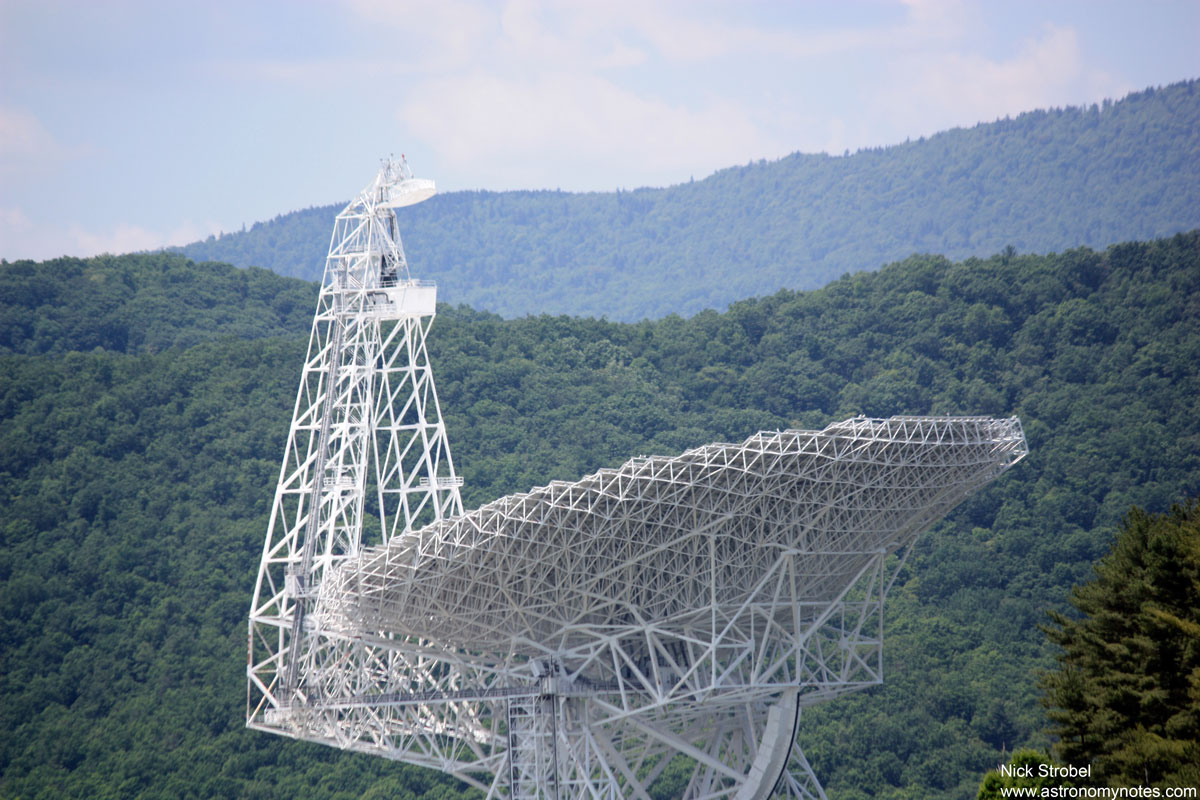

Close-up of the upper half of the Green Bank Telescope (GBT). Another key feature of the GBT is that it has an unblocked aperture with the receivers off axis, out of the way. In other radio telescopes the receiver is mounted above the center of the dish so the telescope will pick up radio noise from the receiver itself and radio reflections from the support arms that hold up the receiver. Having an unblocked aperture therefore results in much less system noise and interference and much better sensitivity to pick up the faint celestial radio waves (for example, a typical quasar's energy reaching the Earth after traveling for billions of light years is only a billionth of a billionth of a millionth of a watt per square meter).
The picture above shows the sub-reflector in position with the prime focus stored out of the way. Up on the antennae platform are eight feedhorn antennae on a sort of turntable that rotate into position (a rotating turret). When the prime focus receivers are wanted, the prime focus piece swings up in between the sub-reflector and the main dish. The prime focus receiver can pick up four frequency bands: 290–395 MHz, 385–520 MHz, 510–690 MHz, and 680–920 MHz. It takes about two to four hours to switch between those frequency bands and must be done manually. When the sub-reflector is used, the eight feedhorn antennae can be rotated into position much quicker but it does require the telescope to be oriented almost horizontally when they are rotated. The available receivers on the rotating turret are: L-Band (1.15–1.73 GHz—note that this includes the 21-cm line of neutral atomic hydrogen), S-Band (1.73–2.60 GHz), C-Band (3.95–6.1 GHz), X-Band (8.0-10.0 GHz), Ku-Band (12.0–15.4 GHz), K-Band (18.0–27.5 GHz), Ka-Band (26.0–39.5 GHz), Q-Band (38.2-49.8 GHz), W-band 4mm (68–92 GHz), and Mustang (80–100 GHz Bolometer Array). Yes, there is a gap in coverage between 49.8 GHz and 68 GHz. Note that 1000 MHz = 1 GHz.
The next set of images were taken with a disposable film camera because digital cameras are not allowed near the radio telescopes (especially, the GBT) due to the camera's radio frequency interference.
Previous -- Next -- Return to start of tour
last updated: September 13, 2011